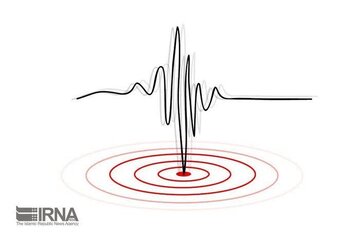4.3 Magnitude Earthquake Hits Assam: What Happened and What It Means
Summary
On a recent day, a 4.3 magnitude earthquake struck Assam, shaking several parts of the state. Fortunately, no major damage or casualties were reported. Earthquakes are not uncommon in Assam as the region lies in a seismically active zone. Residents felt tremors, causing temporary concern. This event reminds us of the need for preparedness in earthquake-prone regions.
Introduction: Assam’s Earthquake Scare
When we think about natural disasters, earthquakes rank high on the list of those that catch us off guard. Recently, Assam, a state nestled in the northeastern region of India, experienced a 4.3 magnitude earthquake. While this may not be the most powerful tremor, it’s certainly a reminder of the region’s vulnerability to seismic activity.
Imagine sitting at home or going about your daily activities, and suddenly, the ground starts to shake. That’s exactly what many people in Assam experienced on the day this earthquake hit. Though it was relatively mild, the tremors were strong enough to remind everyone of the earth’s hidden power.
But what does this mean for Assam and its residents? Why do earthquakes occur so frequently in this region? And how can people stay safe when the ground begins to move? Let’s dive into the details.
The Science Behind Earthquakes: Why Assam is So Prone
Assam falls within what is known as a “seismically active” zone. But what does that really mean? To understand this, we need to take a quick look at the science behind earthquakes.
Plate Tectonics and the Northeastern Region
Earthquakes occur when there is a sudden release of energy in the Earth’s crust, usually because of the movement of tectonic plates. Assam, along with much of the northeastern part of India, sits near the boundary of the Indian and Eurasian plates. When these plates grind against each other or overlap, the pressure builds up, and when it’s released, it causes an earthquake.
The region’s complex geology makes it especially prone to seismic activity. In fact, Assam and the surrounding areas have a history of significant earthquakes. The 1950 Assam-Tibet earthquake, for instance, is still remembered as one of the most devastating in the region’s history.
How Strong Was the 4.3 Magnitude Quake?
While a 4.3 magnitude earthquake is considered moderate, it can still cause damage depending on factors like depth, proximity to populated areas, and building structures. Fortunately, in this case, the damage was minimal. People felt the ground shaking, but there were no reports of serious destruction or loss of life.
However, it’s essential to remember that even a seemingly small earthquake can be a precursor to something bigger. That’s why authorities and residents alike must remain vigilant.
Impact on Assam: What Happened During the Earthquake
The earthquake, with a magnitude of 4.3, didn’t cause widespread panic, but it was enough to get people talking. Several districts in Assam reported feeling the tremors, with the epicenter believed to be located in one of the state’s more remote areas.
Tremors Felt, But Minimal Damage
Luckily, no major damage was reported. Buildings in Assam are generally built with some level of earthquake resistance due to the region’s seismic activity. However, the shaking did lead to temporary fear among the population, especially those who were caught off guard.
Many residents took to social media to report feeling the tremors, describing the experience as unsettling but not overly alarming. In some places, people evacuated buildings as a precaution, though they were able to return shortly afterward.
Preparedness Saves Lives
What’s important in situations like these is how prepared people are. Assam, with its history of earthquakes, has protocols in place for emergency response. Public awareness campaigns have been launched to educate residents on what to do during and after an earthquake.
The Importance of Earthquake Preparedness in Assam
Natural disasters like earthquakes are unpredictable, but being prepared can make all the difference. In regions like Assam, where earthquakes are more common, understanding how to respond in an emergency is vital.
What Should You Do During an Earthquake?
Here are a few key tips for staying safe during an earthquake:
- Drop, Cover, and Hold On: If you’re indoors, drop to your hands and knees, take cover under a sturdy table or piece of furniture, and hold on until the shaking stops.
- Stay Indoors: If you’re inside when the shaking begins, stay there. Running outside can be dangerous as debris may fall from buildings.
- Stay Away from Windows: Glass can shatter during an earthquake, so it’s best to move away from windows or any objects that could break.
Preparedness Kits
Having an emergency preparedness kit on hand is crucial. Your kit should include essentials like water, non-perishable food, a first-aid kit, flashlight, batteries, and a whistle to signal for help.
Assam’s Seismic History: Lessons from the Past
While the recent 4.3 magnitude earthquake was relatively mild, Assam’s history reminds us that stronger quakes are always a possibility. One of the most significant earthquakes to strike the region was the 1950 Assam-Tibet earthquake, which registered a staggering 8.6 magnitude on the Richter scale. This earthquake caused widespread destruction, landslides, and flooding.
The lessons from such past disasters are clear: preparedness is key, and understanding the region’s seismic risks can help save lives.
Building Infrastructure for Earthquake Resistance
Given Assam’s vulnerability to earthquakes, it’s essential that the state invests in infrastructure that can withstand seismic activity. In recent years, building codes have been updated to include earthquake-resistant designs, but older structures may still be at risk.
Upgrading infrastructure and ensuring that new buildings comply with earthquake safety standards is a long-term investment that could prevent widespread damage in the future.
The Global Perspective: Earthquake Preparedness Around the World
While Assam is just one region prone to earthquakes, other areas around the world also face similar challenges. Countries like Japan, Chile, and New Zealand have developed advanced earthquake preparedness systems, including early warning systems that give people crucial seconds to take cover.
Early Warning Systems: A Game Changer
One of the most effective tools in earthquake preparedness is an early warning system. These systems detect the first signs of an earthquake and send alerts to people’s phones or broadcast systems, giving them valuable time to take cover.
In countries like Japan, where earthquakes are frequent, early warning systems have been credited with saving countless lives. While Assam doesn’t currently have a comprehensive early warning system in place, it’s something that could be considered in the future to enhance public safety.
What’s Next for Assam? How to Stay Vigilant and Prepared
As Assam continues to experience earthquakes, it’s clear that vigilance and preparedness are crucial. While the recent 4.3 magnitude quake didn’t cause major damage, it’s a reminder of the region’s seismic activity and the need for ongoing readiness.
Steps for the Future
- Improving Infrastructure: Continued investment in earthquake-resistant infrastructure is essential to minimize damage in future earthquakes.
- Public Awareness Campaigns: Ongoing efforts to educate the public on earthquake preparedness will help ensure that people know what to do when the ground starts shaking.
- Research and Monitoring: Scientists and seismologists are constantly studying the region’s seismic activity to better predict future quakes and understand the risks involved.
Conclusion: A Call for Preparedness
Assam’s recent earthquake may not have caused significant destruction, but it serves as an important reminder. The region is prone to seismic activity, and being prepared is the best defense against the unpredictable nature of earthquakes.
By investing in infrastructure, educating the public, and possibly even implementing early warning systems, Assam can continue to improve its earthquake preparedness. In a world where natural disasters can strike at any moment, it’s always better to be safe than sorry.
FAQs
- Why does Assam experience so many earthquakes?
Assam lies in a seismically active zone near the boundary of the Indian and Eurasian tectonic plates, making it more prone to earthquakes. - What should I do during an earthquake?
Drop, cover, and hold on under a sturdy piece of furniture. Stay indoors until the shaking stops. - How strong was the recent earthquake in Assam?
The earthquake had a magnitude of 4.3, which is considered moderate but can still cause minor damage. - Was there any major damage reported in Assam after the earthquake?
No major damage or casualties were reported from the recent earthquake. - What steps can Assam take to prevent damage from future earthquakes?
Assam can invest in earthquake-resistant infrastructure, continue public awareness campaigns, and explore early warning systems for future preparedness.





